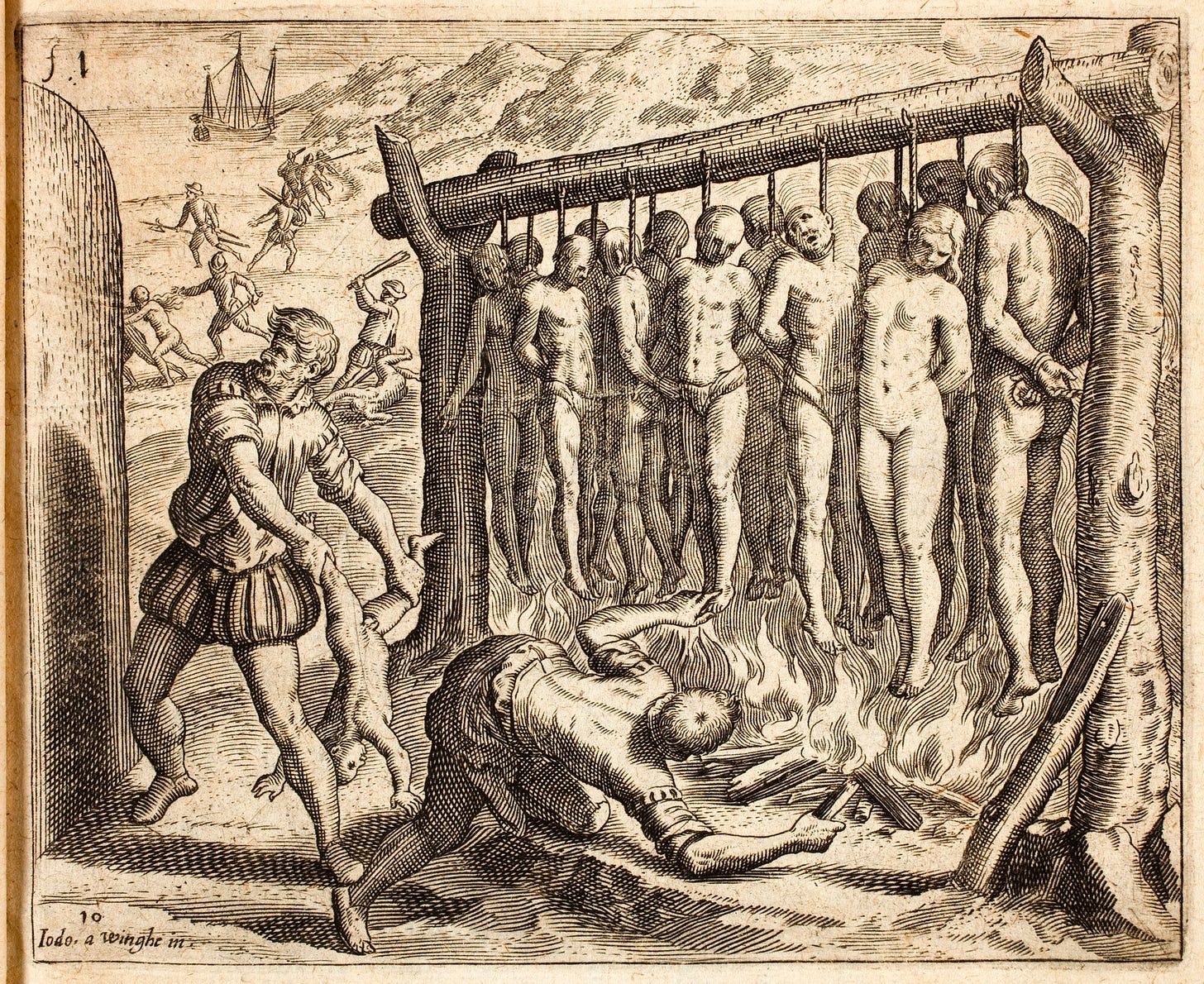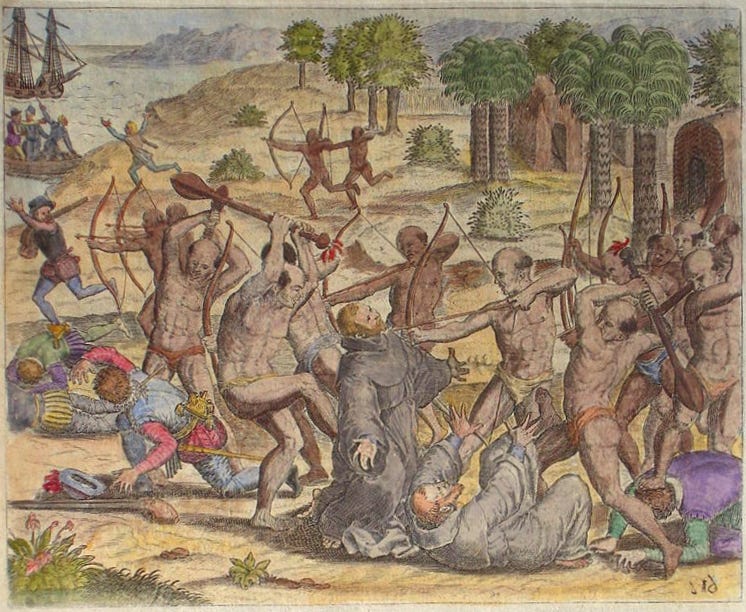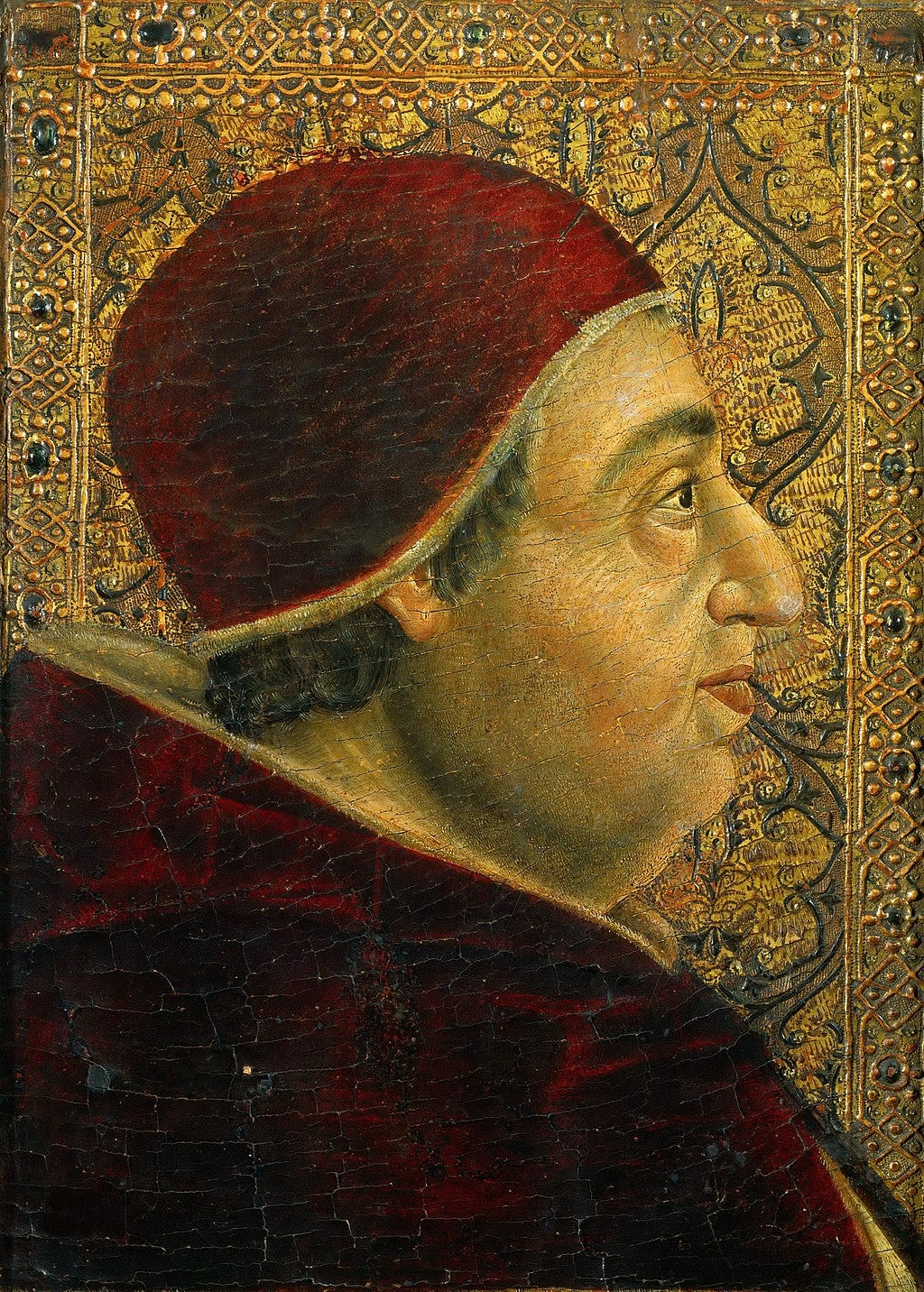
The Vatican made headlines this week, when two of its dicasteries released a statement rejecting the “doctrine of discovery” that was used to justify centuries of colonialism.
The Dicastery for Culture and Education, and the Dicastery for Promoting Integral Human Development released a March 30 statement clarifying, with emphasis, that “The ‘doctrine of discovery’ is not part of the teaching of the Catholic Church.”

It added that the Church “repudiates those concepts that fail to recognize the inherent human rights of indigenous peoples, including what has become known as the legal and political ‘doctrine of discovery’.”
What exactly is the “doctrine of discovery” and how is the Vatican involved?
If you’re scratching your head trying to remember back to your high school history class, don’t worry.
The Pillar has you covered:
What is the ‘doctrine of discovery?’
The idea of a “discovery doctrine” is confusing for Catholics because, when we talk about “doctrine,” we usually mean a teaching of the Catholic Church — a part of the body of beliefs revealed in Scripture and Tradition, and clarified by popes or ecumenical councils.
But the notion of the “doctrine of discovery” actually refers to a legal doctrine — a framework of law or custom by which judges evaluate court cases.
And indeed, one of the first to articulate systematically the so-called “doctrine of discovery” was U.S. Chief Justice John Marshall, in the 1823 majority opinion of Johnson v. M'Intosh.
In that opinion, Marshall wrote:
“This principle was that discovery gave title to the government by whose subjects or by whose authority it was made against all other European governments, which title might be consummated by possession. The exclusion of all other Europeans necessarily gave to the nation making the discovery the sole right of acquiring the soil from the natives and establishing settlements upon it.”
Put simply, according to Marshall, the legal doctrine of discovery says that if an explorer from a Christian, European nation “discovers” new land, the land belongs to the explorer’s home country.
And, as history bears out, that legal doctrine was used to justify the colonization and seizure of land in the Americas, and the abject treatment of native people.
The Vatican dicasteries explained:
“The legal concept of ‘discovery”’was debated by colonial powers from the sixteenth century onward and found particular expression in the nineteenth century jurisprudence of courts in several countries, according to which the discovery of lands by settlers granted an exclusive right to extinguish, either by purchase or conquest, the title to or possession of those lands by Indigenous people.”
What was the Church’s role in all of this?
In their March 30 statement, the Vatican dicasteries noted that “certain scholars” have argued that the basis of the discovery doctrine “is to be found in several papal documents,” citing the bulls Dum Diversas, Romanus Pontifex, and Inter caetera.
Dum Diversas and Romanus Pontifex were issued by Pope Nicholas V in the mid 1400s.
Dum Diversas permitted the Portuguese king to subjugate non-Christians, their lands, and their property, and to reduce them to perpetual servitude — slavery. The bull noted in particular the subjugation of “Saracens,” given the contemporaneous expansion of the Ottoman Empire.
Romanus Pontifex stated that, per the terms of Dum Diversas, the Portuguese king had justly and legally acquired the lands of the non-Christians he had subjugated. It granted Portugal exclusive rights to trade and colonization in Africa.
In 1493 Pope Alexander (Borgia) VI issued Inter caetera, giving to Spain all lands found to the west of a line defined by Portugal’s existing Atlantic island holdings.
That decision was made, Alexander wrote, so that the residents of those lands might be brought “to the Catholic faith” and that “the name of the Savior, our Lord Jesus Christ, would easily be introduced into the said countries and islands.”
Those bulls, it’s important to understand, were political and legal documents — not framed or intended to convey the teachings of the Church, they were instead acts of governance or administration by the Roman Pontiff acting in the political role he played among European powers at the time.
That’s what the Holy See clarified this week, when the dicasteries wrote that:
“Historical research clearly demonstrates that the papal documents in question, written in a specific historical period and linked to political questions, have never been considered expressions of the Catholic faith.”
Still, the dicasteries were clear that the political decisions of the popes in the 15th century had serious problems, both in their text, and their implementation.
“At the same time, the Church acknowledges that these papal bulls did not adequately reflect the equal dignity and rights of Indigenous peoples,” the statement continued.
“The Church is also aware that the contents of these documents were manipulated for political purposes by competing colonial powers in order to justify immoral acts against Indigenous peoples that were carried out, at times, without opposition from ecclesiastical authorities.”
What does the Church teach?
Despite the papal bulls of the 1400s, the Church’s teaching on the subject is expressed in Sublimis Deus, a 1537 bull of Pope Paul III. This document defined that involuntary, non-penal enslavement is contrary to natural law.
Paul III wrote that “The enemy of the human race … inspired his satellites who, to please him, have not hesitated to publish abroad that the Indians of the West and the South, and other people of whom We have recent knowledge should be treated as dumb brutes created for our service, pretending that they are incapable of receiving the Catholic Faith.”
“We define and declare,” he stated, that “the said Indians and all other people who may later be discovered by Christians, are by no means to be deprived of their liberty or the possession of their property, even though they be outside the faith of Jesus Christ; and that they may and should, freely and legitimately, enjoy their liberty and the possession of their property; nor should they be in any way enslaved.”
Church teaching also holds that it is forbidden to invade lands simply because their people are non-believers, or to try to force them to convert.
Has the Church rejected this ‘doctrine’ before?
Within 20 years of the discovery of the Americas, some voices within the Church were speaking against the cruelty associated with Spanish colonialism.
Perhaps the best known of these voices is Bartolomé de las Casas, a Dominican friar and Bishop of Chiapas from 1543 to 1550. He accepted that the papacy might grant non-Christian lands to Christian temporal rulers, but limited its scope to the religious sphere. Seeing the damage wrought by colonialism, he gave up his indigenous slaves, and documented and opposed the encomienda system of forced labor in the Spanish colonies.
Another Dominican friar, Francisco de Vitoria, gave lectures in the late 1530s at Salamanca against the abuses in the New World. He rejected the idea that the papacy had the power to donate the discovered lands in the New World to temporal rulers.
And in 2010, the Holy See's Permanent Observer Mission to the United Nations clarified that Inter caetera was no longer in effect.
It noted that the bull had been abrogated as a source of international law by the Treaty of Tordesillas in 1494, and de facto abrogated as a source of canon law by the terms of Tordesillas and by French colonialism in the New World.
The mission said Inter caetera was also abrogated by Sublimis Deus, whose position “was expanded upon and reinforced in Immensa pastorum of Benedict XIV of 20 December 1741 and a number of other papal encyclicals, statements and decrees. If any doubt remains, it is abrogated by Canon 6 of the Code of Canon Law of 1983 which abrogates in general all preceding penal and disciplinary laws.”
“As you may gather from the above, this abrogation process took place over the centuries according to the legal maxim: Lex posterior derogat priori, i.e. a subsequent law imports the abolition of a previous one,” the mission added.
“Therefore, for International Law and for the Catholic Church Law, the bull Inter Coetera is a historic remnant with no juridical, moral or doctrinal value.”

Why is the Vatican addressing this now?
Several events in recent years have drawn increased attention to the Catholic Church’s relationship with Indigenous communities. One of these is the 2021 discovery of hundreds of unmarked graves on the grounds of former residential schools in British Columbia.
The discovery highlighted the great wound of the Church-run residential school system in Canadian history. More than 150,000 children attended the residential schools from 1863 to 1996. For much of this time, attendance was mandatory for tribal children, who were required to cut ties to their language, traditions, and cultural practices.
During a trip to Canada last summer, which he referred to as a “penitential pilgrimage,” Pope Francis apologized for abuses that had taken place in the residential schools. He said the Church is committed to listening and accompanying Indigenous communities, in an effort to pursue reconciliation and healing.
Some Indigenous leaders have said that while the pope’s apology was an important step, Church officials needed to do more to formally repudiate the actions that had harmed their communities.
“In our own day, a renewed dialogue with Indigenous peoples, especially with those who profess the Catholic Faith, has helped the Church to understand better their values and cultures,” the dicasteries said in their statement.
“With their help, the Church has acquired a greater awareness of their sufferings, past and present, due to the expropriation of their lands, which they consider a sacred gift from God and their ancestors, as well as the policies of forced assimilation, promoted by the governmental authorities of the time, intended to eliminate their indigenous cultures,” they continued.
“It is in this context of listening to Indigenous peoples that the Church has heard the importance of addressing the concept referred to as the ‘doctrine of discovery.’”
It is not clear whether the dicasteries’ statement will be considered a sufficient apology for the serious problems contained in bulls of the past. But Cardinal Michael Czerny said this week that the Holy See needs to continue “listening,” in dialogue with Indigenous leaders, and that there is still work to be done.
“The declaration isn't trying to set the historical record straight, so much as to help the Church, the members of the Church – and indeed all the citizens of Canada, the United States – to recognize what of that sad history, in fact, is at work today. And that's what motivates, you might say, the passion and compassion behind this statement: to help us all to face – and when I say ‘all,’ I mean both the indigenous people and those from elesewhere. Not because it's historical but because of its effects today,” the cardinal said.
What else did the dicasteries say?
The March 30 statement quoted Pope Francis and reiterated the Church’s commitment to accompaniment of Indigenous people.
“In no uncertain terms, the Church’s magisterium upholds the respect due to every human being,” it said.
“More recently, the Church’s solidarity with Indigenous peoples has given rise to the Holy See’s strong support for the principles contained in the United Nations Declaration on the Rights of Indigenous Peoples,” it added.
“The implementation of those principles would improve the living conditions and help protect the rights of Indigenous peoples as well as facilitate their development in a way that respects their identity, language and culture.”











Thanks for another quality explainer. This was an interesting quick dip into history and a reminder of how slowly some wheels of the Vatican turn compared to others.
The original intention of the so-called "doctrine of discovery" was to prevent rival powers from creating wars that would increase suffering and death amongst its participants (and collateral damage). Second, I'm not sure what effect any of Church matters on this issue had with England (which was establishing itself as being Protestant) and France (which had tenuous relations with the Church at best...didn't the king of France kidnap the Pope and kept the papacy in France for almost 70 years?)
Also, "For much of this time, attendance was mandatory for tribal children, who were required to cut ties to their language, traditions, and cultural practices."
Not sure that that was the case: https://www.dorchesterreview.ca/blogs/news/they-were-not-forced
and https://indianresidentialschoolrecords.com/
These sites have official government records, first-hand accounts, even photographs, etc. that show otherwise.
Here are some examples of first-hand accounts:
"June 4, 1916 - The next day, Sunday, June 4, all the Indians came to attend High Mass; the church was full. All sang at the services; they pronounced Latin quite well, recited the Rosary in Montagnais; the hymns were also mostly in that language."
"Students from several schools, including Kuper Island and Marieval, travelled to Expo '67. Many schools had bands choirs, and some offered individual music lessons. A number of radio programs were recorded featuring the children singing both English and Cree."